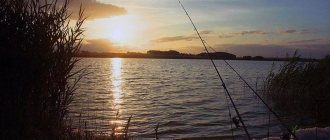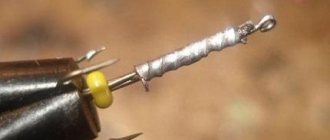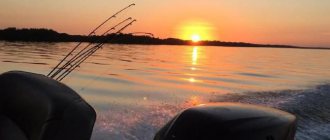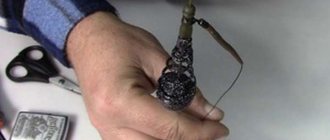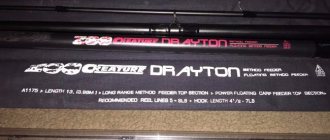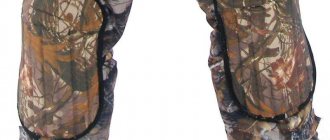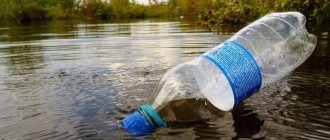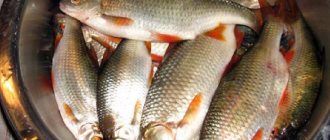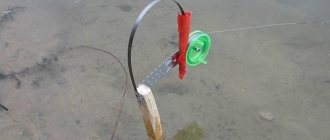WHAT FISH ARE CATCHED ON SUPPLIES?
The bait is a fairly effective tackle for catching pike, although it can also be used for catching other fish, such as catfish, burbot or pike perch, taking into account the peculiarities of their behavior. Carp can also be caught with the help of a bait.
It is not so easy to catch pike perch in winter because it is active early in the morning and late in the evening. The rest of the time he prefers to be at depth. If you choose the right place to install it, you can count on success. Deep areas with a rocky bottom, where pike perch usually hides, can be especially catchy.
When hunting for catfish, you will need a fairly strong fishing line or cord. Naturally, only powerful hooks are used for catfish. Moreover, similar requirements are imposed on all elements of the tackle, otherwise weak points can weaken the tackle as a whole and, as a result, breakage of the tackle and loss of a large specimen. It is better to take crucian carp as live bait.
Crucian carp can live on a hook for up to 5 days. The supplies from the boats are installed in the evening, and in the morning, again, the boats check them for the presence of the catch. It is advisable for the live bait to swim closer to the surface of the water. To catch catfish, it is better to take a medium-sized crucian carp. It is better not to place large crucian carp, since they will be as active as possible, and the catfish may refuse to hunt for them.
Many anglers do not recognize this type of fishing due to the lack of dynamics, which is considered unattractive and not adventurous. Despite this, some fishermen still do not refuse supplies, considering them to be quite effective gear. In addition, the simplicity of the device does not require extra costs. There is no need to stand over the tackle. It is enough to check it a couple of times a day - in the morning and in the evening, which allows you to go about your business, such as setting up a camp or simply relaxing, enjoying the untouched nature.
https://f1sh1ng.ru/lovlya/shuka/postavushki.htmlhttps://fishingadvice.ru/postavushka-na-shhuku/https://handf.mirtesen.ru/blog/43017432141/Postavushka-na-schuku-svoimi- rukami
HOW IS FISH CATCHED ON SUPPLIES?
The technique of fishing with hooks is not particularly complicated. The main thing is to find a promising place where pike may appear in search of food. It is advisable that live bait be prepared in advance. Small perch, ruffe or roach will be used as live bait. They usually catch fish at depths from 1 to 3 meters. When fishing in reeds, it is permissible to use gear at a depth of up to 0.5 meters.
For greater catchability, it is better to install several stands at a distance of 10 to 15 meters. With so many gear supplied, you will have to spend a lot of time checking the supplies, so it is not advisable to fish with any other gear. If the pike takes the bait, it will try to move to the side, so the position of the fishing line will change dramatically. If a small predator takes it, it will try to drag the rig into the thickets of reeds, reeds or other shelter. If he takes a large specimen, he will try to take the rig to depth, pulling the line with maximum effort.
For a more dynamic development of events, it is advisable to check the tackle and change live bait more often. If there are no bites in the same place for a long time, then most likely this place is not interesting for pike. In this case, it is better to move to another promising place.
Useful tips and tricks
For fishing with hooks, simply making and placing the tackle in a promising place is not enough. Fishing this way will bring good results if you know and apply some subtleties and tricks:
- fishing is carried out near the coastal zone near reeds and reeds at a depth of no more than 0.5 m;
- in deep areas of reservoirs to catch trophies, bait is placed at a depth of up to 3 m;
- It is not recommended to use a cord for the base of the tackle; when fishing for a catch, the risk of injury to the fisherman increases;
- Live bait is used as bait; it is recommended to prepare it in advance;
- The bait is crucian carp, roach, ruffe, and small perch;
- it is advisable to use live bait from the same reservoir where fishing takes place;
- You can attach the bait in different ways, but a tee through the gill cover has proven to be the most effective;
- You shouldn’t skimp on accessories if you make the leads for the equipment yourself, so slips and breakage of the gear can be avoided almost completely.
Every angler learns the remaining subtleties directly while fishing.
Now everyone knows how to make a pike stand on their own. In addition, tips and advice from more experienced comrades will help everyone get a pike, and maybe more than one, while fishing.
Features of winter supplies
In order to immerse the supply into a reservoir in winter, you need to make holes. If any other gear is left for a long time, it will freeze, but this does not threaten this device. This feature is due to the fact that the supply is immersed where the water does not freeze. It is attached to the surface using a stick laid across the hole. The top is covered with brushwood and additionally covered with snow. With such insulation, the tackle can stand all night and not freeze; if there is ice, it will only be a thin layer.
To summarize, we can conclude that the product has the following advantages:
- It’s inexpensive in the store, and you can make it yourself;
- it is possible to build directly on a pond;
- the fishing line unwinds evenly, so the predator will not be scared;
- suitable for fishing in places hard to reach for spinning;
- can be used at any time of the year;
- It is permissible to use in various types of reservoirs.
Postavushki can be used as the main type of fishing, i.e. put it down and go about your business. For example, pick berries, mushrooms, relax, etc. You can also catch pike with a spinning rod at the same time. In the second case, there is a much greater chance of getting a rich catch, especially if you place several supplies at once.
Also on this topic:
Fishing in the Moscow region - the best places
Catching carp on top (cake)
Catching pike perch with a spinning rod - choosing bait and location
Catching crucian carp on a feeder in still water
Features of sea fishing
Places for installation of the supply
In coastal areas there are a lot of predators, for which there are many natural shelters in grass or snags. These are the places that pike prefer to occupy. In addition to the opportunity to hide in ambush for the toothy predator, there is a rich food supply near the shore in the form of large schools of small fish. Let's look at several promising points where the chances of catching a pike are high.
- The gear can be installed in a grassy bay surrounded by reed thickets. It is enough to watch the surface of the water a little from afar to see many predator exits.
- A lot of pike are hiding in snags, reeds, and under fallen trees.
- Good points for installing supplies will be channels where a strong current is adjacent to standing water.
- Promising places will be sand spits below the islands, straits between the islands and any other anomalous coastal areas.
Near the shore, in places littered with branches, there are a lot of pike. But how to catch a predator without tangling the tackle? To do this, it is better to use a supply with a fixed supply of fishing line. Then, after the bite, the toothy one will not have the opportunity to go into the deep snags. In such places it is better to use bleak as live bait. It will not strive for depth, but will float above the snag. The casting of the equipment is done through the window between the snags.
A bunch of reeds can be used as a shock absorber. It is enough to tie the fishing line of an abandoned tackle to several closely spaced plants to prevent the leash from being cut when a predator attacks.
If the choice of place to install the supplies is made correctly, then the first bites can occur within the first 10-15 minutes. Despite the small size of the predator, fishing with traditional girders will be a very interesting activity. So the fisherman will not be bored. Large perch and pike perch may be bycatch.
Differences between winter and summer supplies
The positive side of using a stand in winter fishing is that it does not have surface equipment. When fishing with girders and other winter gear, some important elements remain above the water, which is why they freeze and reduce the functionality of the structure. However, the supply is not in danger of freezing. Since all equipment is under water during fishing.
In winter, it is convenient to fix the stand over the hole. For example, to do this, it is enough to wrap the structure around a stick and place it horizontally, transverse to the hole. Securing summer tackle is a little more difficult.
However, summer fishing for pike with a stand has its advantages. In warm weather, live bait can last much longer. This increases the likelihood of an active bite and saves live bait. In winter, replace the fry more often. In order for it to last as long as possible, it is better to avoid using gudgeon or bleak for such purposes, which are among a number of low-hardy fish.
Watch a video about summer fishing with baitfish:
How does a winter supply differ from a summer supply?
In winter, when fishing from an ice hole, there is usually a danger of freezing of gear left for a long time. The supply is located entirely below the water level and therefore is not in danger of freezing. This distinguishes it from the girder, which, although very similar to it, has surface parts in its composition.
Another difference is the method. Which is used to secure the delivery. When fishing from an ice hole, it is convenient to use a stick for this purpose, which is located on the hole.
During the winter bite, the requirements for the viability of live bait increase. In winter water for a long time, it has little chance of surviving for a sufficient period of time. Due to this circumstance, it makes no sense to use bleak or minnow for this purpose.
Installation of a pike fishing stand
Before installing the tackle in real pike fishing conditions, I complete the tackle as follows (Fig. 2). In the recess of housing 1 I tie and wind 10 meters of fishing line with a diameter of 0.5 mm.
I put a swivel 5 on the main fishing line of the girder, and below I tightly fasten a lead pellet 4, which limits the downward movement of the leash.
I tie a cone-shaped sinker 3 to the end of the main line of the supply. Equipping with a sinker increases the weight of the supply by 80 g. The weight of the sinker is quite enough to reliably anchor the tackle in the place where pike is caught.
To the swivel, through a clasp 6, I attach a nichrome leash with a diameter of 0.3 mm and a length of 30 cm, equipped for catching medium-sized pike with a double No. 8 (according to the Russian numbering of hooks).
The clasp included in the set of summer equipment allows you to remove the leash from the main fishing line when catching a toothy predator.
I prefer to catch pike on such girders, using small, 10-12-centimeter roach as live bait.
I pierce the fish’s upper lip with one of the double’s hooks or insert a sting into the nostril and secure it with a strip of elastic so that the fish cannot free itself and lives longer.
(Here the author of the tackle most likely means a small square of elastic, like those used to secure the beads of artificial baits on the hooks of reelless jigs or a ring of a bicycle nipple elastic.)
When fishing for pike on a stand near the algae, I swim 3-5 meters away from them and lower the sinker of the girder rig to the bottom of the reservoir.
Then I tighten the fishing line and fix it in one of the cuts in the body so that it does not sag, and the position is at an angle to the surface of the water (Fig. 3).
It is important to ensure that the live bait set for pike fishing at this moment does not confuse the leash of the rig with its main fishing line. I install stands for summer pike fishing 10-15 meters apart from each other.
Their inclined position informs me that there is no bite, and free swimming, leaving the general row - that the pike took the bait on the girder
I install stands for summer pike fishing 10-15 meters apart. Their inclined position informs me that there is no bite, and free swimming, leaving the general row - that the pike took the bait on the girder.
A small pike weighing 0.4-1 kg usually drags the bait into the coastal algae, through which you have to wade through it, fingering the fishing line with your hands. Pike larger than 1 kg are pulled to depth by the float of the girder.
Read How to put a worm on a hook
On rivers, they also catch pike well with set-ups: I put them in bays, in quiet water, choosing places where pikes usually hide.
The trap needs to be checked periodically: untangle the rig, replace dead fish with fresh ones, remove the caught pike and adjust the rig.
During the day, supplies charged for pike fishing have to be checked 3-4 times and always before the evening dawn. If there are no pike bites, you need to install the girders in another place.
A homemade supply for summer pike fishing has another important advantage: the equipment is compact when assembled (see Fig. 1) and is easy to transport
To assemble the girder, you need to tightly wind the fishing line in the groove of the float of the supply and insert the sinker into the recess, where it will be tightly fixed by the wound fishing line.
After this, you need to wrap a leash around the body of the girder, fix it on it, sticking both hooks into the foam.”
This is all the essential stuff that was published in the article about installing and catching pike on fishing tackles and setting up the girder equipment. If anyone is interested in my own thoughts and additions regarding fishing for pike and pike perch, read the next article.
How to fish for rigs?
First you need to determine the place where the pike is expected to live. You also need to prepare fish for live bait. Ruffs, roaches or perches may be suitable for this. The stand is usually placed at a depth of one to three meters. If you are going to fish in the reeds, then you can install this tackle at half depth. Usually they put not one, but several copies. They are located at a distance of ten to fifteen meters from each other. With this method, it is important to find out in time whether there was a bite or not?
This is usually determined by a change in the position of the gear on the water. If there was no bite, the supply will be positioned strictly horizontally. As soon as the pike takes bait, the tackle will become vertical or will be positioned obliquely.
Small and large specimens usually behave differently. A small pike will pull bait into the seaweed or reeds. A large fish will act differently - it will drag the bait to the depths. In order for fishing to go faster, you need to remember to get the fish on time and renew your passion. If there is no bite for a long time, then it is best to change the place of fishing.
Manufacturing process
To make a homemade supply, there is no need to purchase any special equipment. All the necessary parts can be found in almost any household. Nowadays, several options for installing the supply are popular. One of them consists of:
- A small piece of rubber hose (about fifteen centimeters);
- Wooden stick;
- A standard set of equipment, including fishing line (from 0.3 to 0.5 millimeters), hooks and sinkers;
- Knife and sew.
Manufacturing takes place in several simple steps:
- One edge of the hose is pierced with an awl. This is how two small holes appear, placed opposite.
- The other side of the hose is cut slightly lengthwise.
- A strong fishing line is threaded through the holes, forming a loop. With its help, the stand will be attached to a stick that serves as a holder.
- Fishing line for equipment is threaded into the same holes. It is then tied tightly and wound around the middle part of the hose.
- A leash is attached to the end of the fishing line, onto which you first attach the hook and swivel.
- To secure the line and prevent it from getting tangled, the end of the line is pulled through a slit on the other side of the hose. This makes the device easy to transport.
- A large sliding weight is installed on the main line, the weight of which ranges from four to twelve grams.
The supply is ready for use. Before throwing it into the pond, insert a stick into the hose and secure it with the loop provided for this purpose. Then live bait is put on the hook and fishing begins.
Take action!
When fishing for pike with a girder on a small (10-15 meters wide) river with a small current, an abundance of backwaters and creeks, thickets of aquatic vegetation and an average depth of about 2.5-3 meters:
- Prepare and equip all the fishing rods at home - the gear should be set up as quickly as possible on the reservoir.
- Since it is most likely to catch pikes ranging in size from 1-1.5 to 2-3 kg, use a transparent monofilament line with a cross-section of 0.3-0.35 mm, an olive sinker weighing 6-8 g, and a metal leash 15-20 cm long. with triple or double hook No. 3-4. For such a small river, wind no more than 10 meters of fishing line on each girder - such a supply is quite enough so that the pike, having taken the bait, is detected and cannot get the equipment too tangled in the grass.
- It is best to take 5-6 girders with you - install 4-5 of them, leave 1 in reserve;
- Having arrived at the reservoir, initially carefully, without creating unnecessary noise, walk along the river bank and select several places in which there is a high probability of pike presence - backwaters and small backwaters, snags, fallen trees and lying in the water, reed thickets, water lilies
- From alder, hazel or young aspen growing on the shore, cut the required number of poles from 2 to 3 meters long, remove small branches from them, carefully sharpen the butt part of each of them;
- Do not remove bark from poles to camouflage installed gear;
- Using a fishing rod with a sinker, measure the depth in the places where the girders are placed; based on the results of measurements, reel in and fix with a splitting line such a length of fishing line so that the live bait is 5-10 cm above the bottom;
- It is best to prepare live bait in advance - in this case, give preference to juveniles of “local” fish species: small roach, perch. In this case, the pike is more likely to take live bait without being wary;
- Place the live bait behind the back, being careful not to damage the fry’s spine;
- Tie each of the poles securely to the top of the pole and carefully, without creating unnecessary noise, lower the rig with live bait into the chosen place and firmly stick the pole with its pointed end into the shore;
- After all the gear is installed, move some distance away from it and fish with a float rod - the absence of a person on the shore near the gear, clearly visible to a sharp-eyed predator, will allow him to safely come out of his hiding place and attack the baitfish on the hook;
- Check the vents every 3-4 hours. It is very difficult not to notice the triggered tackle - the fishing line is stretched with a string, the tip of the pole often bends under the jerks of the pike. Having noticed a triggered girder, do not hook or hesitate - just quickly pull the fish ashore, allowing it to tangle the fishing line in the grass or branches of the nearest snag;
- Having pulled the pike ashore, using a yawner or, in extreme cases, a twig, remove the hook with live bait from its mouth, not forgetting that your fingers should not end up in the pike’s mouth;
- To ensure that the fish does not spoil and remains alive for a long time, place it on one of the carabiners of the kukan, tied to a reliable stake driven into the shore, and lower it into the water;
- After catching a pike, re-bait the tackle with fresh live bait and throw it into the same place.
How to make tackle yourself
The order is as follows:
- You need to take a small piece of hose. Up to 10-12 cm long.
- On one side you need to drill through the pipe to get 2 opposite holes. They are made at a distance of approximately 2 cm from the edge. The cord is then attached to these holes. A small loop is later made on it. On the other hand, you just need to make a small cut along. This is necessary to secure the fishing line so that it does not unwind from the hose on its own.
- Drill a hole in the middle to tie the main line. But it can also be attached to the previously made side. After the fishing line is firmly attached to the body of the tackle, it must be wound around the hose. A fishing line can be taken with a diameter of 0.4-0.5 mm. In the winter season, a regular fishing cord is used instead.
- Then the sinker is fixed, its weight is selected depending on the fishing conditions. Approximately 4-12 g, it should not sink the tackle much. The load can be made sliding.
- Lastly, a leash with a swivel and a single hook are attached.
- Live bait is attached immediately before throwing the equipment into the water.
The tackle can be made in various ways from available materials.
The length of the fishing line should not be too long. It should be greater than only 5 m from the depth at which you plan to fish. So, for small reservoirs the length will be 10 m, and for deep ones - 30.
What is the purpose of the cord that we attached to one end of the hose? To fix it on the shore or on a hole. In winter, for example, the tackle is immersed in water, and you can pass a stick through the loop and place it along the hole.
The reel does not have to be made from a hose. It is made from any available materials: polystyrene foam, a wooden stick or thick cardboard. The tackle can also be made from a 1.5 liter plastic bottle.
Antediluvian priest
It all started with a primitive girder, which regularly brought pike, perch and pike perch to our ancestors. To make it, a 1.5-2.0 m stake was cut out and sharpened on one side. It was driven into the shoreline. A rig was attached to it, consisting of a thick fishing line or rope, a sinker and a hook. The antediluvian vent can be successfully used today. Only through the process of equipping can you give it a little elegance and efficiency.
- To make the equipment, you will need a piece of monofilament fishing line with a diameter of 0.5 mm.
- A large single hook is tied to the end of the thread.
- Any sinker available at hand is mounted on the fishing line, for example, the “Cheburashka” model, popular among spinning players. To install it, just make a loop, thread it through one of the sinker's ears, and then pass a lead ball into the loop.
Recommendation!
It is best to install a simple rig while wearing a wading suit. Thanks to it, you can carefully cast the equipment when entering coastal waters. Read more: About waders.
Small bleak, roach or perch weighing up to 70 g are suitable as live bait.
To install the girder, you need to go into the water and drive a peg in a convenient place. Then you need to unwind the required supply of fishing line from the reel and cast live bait. You can tie the equipment to the peg using any reliable knot, and then cut off the excess fishing line.
The disadvantage of the antediluvian girder is the lack of free movement of the fishing line after a bite. As soon as the pike feels the tension, it most often throws the bait.
Additional gear
In addition to the supply itself, fishing with it requires some more gear and tools. One of the reasons for this is the characteristics of the predator. Pike has very sharp teeth. She also usually swallows the bait very deeply. For this reason, a fisherman may cut his hands when removing the hook from the inside of the fish.
Read DIY fish smoker
To avoid this and other unpleasant situations, stock up and use the following devices:
- With a gapper you can easily open the mouth of a fish and fix it in this position. The device works as follows: the gapper is closed and placed in the pike's mouth (this is easy to do even if the mouth is closed). The device is then released and, thanks to a spring built inside, expands, leaving the predator's mouth open.
- Then you need to use an extractor or a medical clamp to remove the hook from the insides of the predator.
- To make it easier to remove large and active fish from a pond, you can use a landing net.
- To store caught predatory fish while you continue fishing, use a cukan or a rope on a wire.
Using a yawner will protect your hands from injury
Force Majeure
Pike fishing can be unpredictable, so it is advisable to have additional gear with you. A few points when you need them:
- The fish took the bait deep. When taking out the hook, there is a chance of getting hurt on the sharp teeth of the predator. In this case, a yawner will help. The device, when closed, is placed in the pike's mouth, unclenched and, due to the built-in spring, opens the mouth. All that remains is to remove the hook using an extractor.
- For the caught trophy, it won’t hurt to take a kukan with you.
- When you remove a predator from a reservoir, it often fights back, and to make the task easier, you can use a landing net.
- To keep the bait alive you will need a plastic jar to contain it.
And of course, take a supply of hooks, line and sinker, because the pike family is a “clan with character.”
Homemade pike stand
Above is a magazine description of a homemade fishing rig for pike, and I really didn’t like the picture showing the rig in a charged state.
But some of the fishermen may take these supplies into service and try to set them up in this form for pike fishing.
Therefore, I transferred Figure “3” from the previous page to the material of this article and for pike fishing I propose a slightly different method of installing homemade supplies for the following reasons.
Even if you don’t look very closely at the adjacent image of the grenade, you may get the complete impression that setting up a homemade pike rig is more sensitive to the slightest influence of external factors than stretching a grenade.
Judge for yourself: Firstly: if you believe the picture, then to catch pike with girders near the algae, we will have to measure, with an accuracy of a couple of millimeters, the depth of a reservoir with a muddy bottom, into which a cone-shaped weight with an inverted top will necessarily, and no one knows how, fall through.
Secondly: the fishing line cannot come out of the slot of the supply float in the place shown in the figure with the blue line. Its output will correspond to the orange dotted line. For this reason alone, setting the pike even without a grip should be on the verge of triggering.
Thirdly: an inverted cone-shaped sinker with a high center of gravity, and even weighing 80 grams, will definitely fall on its side.
As a result, the reel of a fishing tackle installed for pike fishing in this way, due to the torque created by the weight of the load of the reel, will immediately rotate clockwise by 90 degrees.
If you are going to equip such a sinker with a cone-shaped weight, then you need to give it at least the shape of a bell, but the wide base of the sinker should be at the bottom.
In the same way, even on a weak wave, raised by the wind or current, the main line of such a design of a homemade pike rig will definitely be torn out of the horizontal slot.
Although all these destabilizing factors may not be necessary if the bait set up for pike fishing is loaded with live bait. One slight jerk of the fish may be quite enough for this girder to work even without the pike’s grip.
And we may simply not have 4 seconds left to move the boat away from the charged supply to a safe 200 meters.
That’s why I propose to form a slot in the middle of the wide end sides of the float and use a flat weight when fishing for pike.
The new slot is drawn with a red dotted line in Figure “1” of the previous page.
In this case, the pike fishing stand will become more resistant to gusts of wind and jerks of live bait.
We make the supply with our own hands
The process of making this gear is quite simple and anyone can handle it. To do this, you need to prepare all the materials in advance.
What you will need
- a piece of fishing line about 8 meters long with a cross-section of at least 0.5 mm;
- sinker weighing about 20 grams;
- a piece of small rubber hose, about 15 centimeters;
- a tee or a reliable double with a carbon leash;
- nylon thread.
Build process
After all the materials have been collected, you can proceed directly to collecting the supplies. This must be done carefully and carefully so that the device turns out to be of high quality and without flaws.
- Stepping back three centimeters from the edge of the rubber pipe, a through hole is made. Here the main fishing line and a nylon ring are attached, which will be attached to the spacer near the hole to stabilize the tackle.
- On the other side of the rubber hose, you need to make a neat cut of two centimeters. It is into this that the edge of the main line will be inserted.
- Depending on the depth of the reservoir where fishing will be done, a fishing line is wound around the tube. As a rule, 15 meters is enough here.
- The main line is threaded into the sinker and secured with special stoppers. A leash with hooks is attached to the free end.
- All protruding and uneven ends are cut off and the stand is ready for use; all that remains is to catch the bait and attach it to the hook.
There are a huge variety of different modifications of this gear. After all, every home craftsman prepares it for himself, taking into account the characteristics of the reservoirs where fishing is carried out. Some people use a rubber hose, while others prefer a bamboo cane.
Also, the quality of the hooks may vary. The most important thing when choosing them is to calculate so that they can withstand heavy loads. This happens due to the fact that supplies are often checked every few days. If the tackle or part of it is poorly executed, then the fish will most likely simply break loose and swim away.
Post fishing tactics
To catch the desired trophy on a stand, it is very important to know not only how to mount it yourself, but also how to properly fish with it. Experienced fishermen know the reservoirs and use their own method on each of them, which brings maximum efficiency
First you need to choose the right fishing spot. Here you need to know the features of the reservoir: the state of the bottom, the channel, the presence of underwater obstacles, creeks. It is best to place the fish in snags, since this is where predatory fish are most active due to the large concentration of fry.
Next you need to catch and prepare live bait. Moreover, you need to keep it alive for as long as possible, since in this case the chances of a successful bite are much greater.
After the bait is placed on the hook, the tackle should be lowered into the water. As a rule, it is enough to lower the line by three meters. However, the bottom topography and the quality of the reservoir itself play a huge role here. So, in reeds and snags, the tackle is immersed only to half the depth.
To increase the chances of a rich catch, it is worth placing several stands at once with an interval of 15 meters from each other. If the tackle has changed its location, then it needs to be checked. If there is a catch, then remove it and replace the live bait with a new one.
You can fish with a fishing rod throughout the year, but it brings a particularly rich catch in October and November, when many predatory fish are most actively biting before the start of wintering. It is at this time that experienced fishermen come forward for predatory prey.
In summer, fishing with such gear is usually done from a boat. Experts recommend installing stands along the boundaries of reeds, thickets, in channels between rivers, and on rifts. Small fish most often accumulate in these places in search of food. And this is precisely what attracts a large number of predatory fish here that don’t mind hunting.
How to choose a place to fish for bait
Catfish loves the vast expanses of the Volga and pit holes not far from the fairway. At the same time, it can also live in small rivers, as long as this river has deep holes and snags. And in the deep channels of the Volga delta, this is one of the largest predatory fish that lives here in large numbers.
The main condition when choosing a place for catching catfish using baitfish is the presence of a clearly defined pit edge. This will be the best place to install the gear. You can't put the hangers out in the pit itself. On the Volga there are usually old driftwood there, there are rocky ridges that seem to be an attractive place for catfish, but there is almost no life here. And such a hole is most likely a resting place for catfish, but not a hunting ground. Only along the slope of the pit do colonies of shells begin to appear: toothless mussels, mussels, pearl barley, depending on the bottom in a given place. And this is the first sign that the place is suitable for catching a predator. Fish that are interested in mollusks will also stay here, such as bream and chubs. And they, in turn, are potential prey for catfish. Such places are determined by simply dragging a marker weight along the bottom or using an echo sounder.
On a small forest river, where catfish can also live, albeit not as large as on the Volga, it is even easier to find fishing spots. Here the bank structure is standard if we are talking about a river with a sandy bottom and steep banks. Usually, opposite the gently sloping shore-beach, there is a high cliff on the opposite side. In the spring, strong streams of large melt water flow into it, washing away the shore. And the pines, spruces, and oaks standing on the cliff sooner or later fall down straight into the black pool. Sometimes such fallen trees remain on the surface of the river for some time, maybe even several years, due to the roots or branches stuck into the bank during the fall. In these snags, often up to 6-10 meters deep, the owner of this pool will definitely live - catfish, provided, of course, if it is even found in this river or section of the river. It often happens that catfish are found only closer to the mouth of the tributary flowing into the Volga.
Pike perch also prefers deep holes, but this predator is even more inclined to bottom ledges and places where there is something similar to a hollow extended along the current, rocky ridges on the bottom, sand spits and holes along the edge of these spits. Pike perch loves current and fresh water. Therefore, it can more often be found on a rocky or sandy bottom.
Pike is caught with baitfish, one might say, everywhere, and this can be a village pond with a muddy bottom, duckweed, sedge and reeds along the banks, along which stripes of burdock stretch. And here the coastal strip of water lilies will be a catchy place for fishing with water lilies. Another promising place for catching pike in such a pond can be called a channel pit, which was once a river. And the closer to the gateway, the deeper this old channel is. Here you can also successfully catch pike, and often larger ones than along the coast.
On the lakes, pike fishing spots will also have areas of aquatic vegetation. Sometimes fishing with baitfish at the mouths of forest rivers flowing into the lake can be very effective. Usually these are bays overgrown with reeds and water lilies. This is where you need to put these gears.
On rivers with a current, the best places for baiting are quiet grassy bays at the mouths of oxbow lakes and the oxbow lakes themselves, as well as deep pools with a slowly swirling reverse current. Here you can find the largest pikes, called pit pikes, which have a massive short body with golden scales.
Postavukhs are very effective gear when catching other predators, but only night ones. This is, of course, burbot. Why are postavukhs better than zakidushki and other donkeys? All donks are cast from the shore, which means a clean bottom for the movement of the sinker and leashes with hooks for winding the fishing line to the shore. Otherwise, snags and loss of gear are inevitable. The postavukha can even be anchored in snags, on a small clean patch of the bottom. And often this is where the largest burbot is caught in the fall. When fishing for burbot in the spring, sometimes you can’t do without a hook at all, since it’s difficult to find a clean bank for casting hooks. Usually, at such a time, all the former catching places are under water, and in front of them there is still a willow forest in the water, through which it is definitely impossible to drag the bait through while winding the fishing line to the shore. And from a boat you can choose a place in some deep, quiet water and install a stand here. Moreover, it is best to look for such a place around the bend in the river, where the stream hits the opposite bank.
Perches are also often caught on baitfish, but only with bait of worms or small fish on a single hook. Usually, the places for catching perch with baitfish coincide with the places for catching pike, and therefore both pike and perch are caught on these gears, if there are live bait on the hooks.
Large rotans are tempting prey. And they are quite wary when an angler is nearby. More often, hand-sized rotans bite on the fishing rod. But if you place a baitfish with a fish on a hook, a large bunch of worms, offal, a piece of lung next to the grass or in the windows in the middle of it, then at night or early in the morning this tackle can catch rotan weighing up to a kilogram, if, of course, such fish are found in this body of water From the shore, no tackle can reach the hole in the grass, and if you do, you will leave the tackle on a snag or in the grass. Only a simple catch is capable of catching a large rotan, and without the participation of a fisherman.
Even quiet-water and relatively peaceful fish, such as lazy and fat carp, are caught using baitfish. And here, too, an important role is played by the fact that the tackle works without the participation of the fisherman, since the carp, despite its power and large size, is shy and cautious. Often, for his sites, he chooses snags under the banks of forest ponds, where he cannot be caught with any gear. He will definitely drag the equipment of a feeder or other donkey into the snags. A postavukha can cope with the task if you equip its leash with powerful rubber, a kind of feeder-gum, and make the load as heavy as possible. In other places, for example, on a clean river pond, the bait, on the contrary, is often installed so that the carp drags a not very heavy sinker across the pond and, in the end, simply runs out of steam. Here, places are chosen along the old river bed, which served as a source for the formation of the pond.
Live bait for fishing
Among the live baits used for catching pike on a girder, use juveniles of the following fish species:
- goldfish;
- perch;
- roach;
- rudd;
- gudgeon
Also, do not use prickly ruffe for girders, which pike, unlike pike perch, do not eat. Do not place small white breams and white breams with a wide body on pike baits as live bait.
Attach live bait in the following ways:
- carefully pierce the back of the bait fish with any of the double hooks just above the dorsal fin;
- pierce the upper lip of the live bait with a hook;
- pass the leash through the gills into the mouth of the bait fish, put a double hook on it, then pull the leash and fix the hook in the mouth of the fry.
Read: Catching eels with a pipe
Store live bait in bulk buckets or special buckets - cans. At high temperatures, change the water as often as possible and do not expose the container to direct sunlight.
Store live bait in bulk buckets or special buckets - cans
What is a supply?
In order to independently assemble a device at home, you should have an idea of what it is and what the device as a whole looks like. A postavushka is a fishing tackle in which, unlike a girder, there are absolutely no flags or other identifying marks indicating a bite.
Fishing is done with live bait, which can be small fish caught before. It is attached to a tee, which is released into the water, while the tackle is secured to the hole. Since there are no warning signs here, you should periodically check all the holes and remove the caught fish from the gear.
Advantages
Fishing with a stand has a number of significant advantages, thanks to which many fishermen prefer this particular method.
First of all, when using this method of pike fishing, your hands are freed up; there is no need to constantly hold the gear in your hands.
You can place several supplies at once, which increases the chances of catching the desired trophy. The coil is located under water. This prevents it from freezing into the ice and always unwinds perfectly and calmly. Thanks to this, you can check such gear less often than others.
Flaws
The only drawback, according to experts, is the absence of any beacons that signal the catch. Because of this, you can simply miss the moment of biting. However, it can be easily eliminated by adding a flag, like the zherlitsa.
For many, a significant drawback is the lack of active action, since you have to spend a lot of time setting it up and then just sit and wait.
What is a postavushka, how does it differ from a zherlitsa
The setup for catching predators can be classified as an old-fashioned method of fishing, since its roots go back centuries. The idea of the gear is to install live bait under the ice. Its design is very primitive and their manufacture is not particularly difficult, therefore, as a rule, anglers who fish with them make the supply with their own hands. You can easily make a dozen copies in an hour.
If the girder is installed on the surface of the ice, then all the equipment and supplies are located in the upper layer of the reservoir. It does not have a bite alarm, so the bite is not noticeable - and this is its only drawback. After the fish grabs, self-hooking occurs. However, the disadvantage is compensated by a significant advantage - there is no need to monitor the gear, and you can fish with other fishing rods.
METHODS OF MANUFACTURING SUPPLIERS WITH YOUR OWN HANDS
What is most important is that this tackle is made quite simply, without the use of any scarce elements of the tackle. Unfortunately, it is unlikely that you will be able to buy it in a store, but making it yourself is very possible. In fact, there are several options for such gear. This article will look at one of them.
To make the supply you will need the following materials:
- Not a large piece of rubber hose.
- Sturdy wooden stick.
- Line, sinker and hooks.
- Knife and awl.
The manufacturing process is as follows:
- First of all, you need to take a piece of hose and pierce it with an awl closer to one of the ends so that you get two holes located one opposite the other.
- On the other hand, a piece of hose is simply cut.
- The fishing line is threaded through the holes so that a loop is formed, with which the hose will be attached to a wooden stick.
- The main fishing line on which the fish will be caught should also be threaded through these same holes. One end is fixed here on the hose, and the rest of the line is wound in the center of the hose.
- Not all of the fishing line is reeled in. A leash with a hook and swivel should be attached to the remaining fishing line.
- To prevent the line from unwinding on its own, it is fixed in the cut of the hose. During the bite, the line will easily pull out of the cut and begin to unwind from the tube, which is what is needed.
- A sliding sinker should be attached to the fishing line, weighing from 4 to 12 grams, depending on the strength of the current.
- The gear is ready, and all other operations with it are carried out while fishing. Here it is attached to a wooden stick and placed on a live bait hook.
During the manufacturing process, other approaches to the use of materials are possible. Alternatively, you can use different hooks and also experiment with the leash. You can install it, or you can do without it. There is a huge field for experimentation here. In this case, we take as an example a fairly simple structure that is installed from the shore.
There are designs that consist of a heavy weight and a float, which allows them to be installed from a boat. This makes it possible to fish in deeper places. After all, it’s especially difficult to cast gear from the shore.
In winter fishing conditions, the tackle is attached to a stick, which lies across the hole and is camouflaged with snow.
One of the manufacturing methods
You need to prepare in advance:
- hose or rubber (small piece);
- a strong wooden stick (for further securing the gear on the ground or on ice);
- hooks, rope, wire, sinker;
- awl and knife.
We advise you to watch a very interesting video about supplies:
Step-by-step process for making a pike stand with your own hands:
- Pierce the hose or rubber with an awl on one side to create 2 holes.
- Make a small cut at the other end.
- Thread the wire through the holes and make a loop.
- Insert the rope in the same way, but fasten one end to rubber, and wrap the rest around the base (hose).
- Attach a hook to the end of the winding.
- Fasten the rope in the cut on the opposite side of the rubber.
- Install a sliding sinker. The weight can be different, from 4 to 12 g (depending on the strength of the current in the reservoir, the stronger it is, the greater the mass).
Rice. 2. What should happen.
Summer bait for pike perch
A fishing summer bait for pike perch is shown in the adjacent photo.
I’ll immediately explain the purpose of the elements of fishing tackle.
Below the letter “H” is shown the shape of the end surfaces of the reel supplied by us for catching pike perch and pike perch.
The flattened, smoothed shape of the reel of the summer bait for pike perch allows the foam float to react to gusts of wind to a lesser extent.
The length of the reels in our homemade floats is approximately the same as in the magazine version of the supply, only we paint the side planes of the float.
In the middle of the float of the summer girder for pike perch, a groove about half a centimeter deep is sawed in a circle (with a round file), which serves for winding up a supply of fishing line (12-15 meters).
In a state charged with live bait, under the influence of wind or a slight current, the float of the floating girder from the side of the fishing line charged in the slot sinks slightly more than from the opposite end.
Therefore, when fishing for pike perch or pike, predatory fish will need very little effort to turn the reel over. After that, the summer girder is unwound from the float - the line is supplied, which is shown in Figure “5”.
The pike perch will not feel much resistance from the fishing line even when leaving with live bait in the mouth cavity from the sliding sinker of the fishing line somewhere to the side, since unwinding it from the reel of the fishing line, which has the shape of an ellipse in cross section, requires a very small torque.
Under the number “1” is shown a magazine version of a fishing rod float for pike perch. The round arrow shows the direction in which the fishing line is released from the reel of the reel when the pike perch with live bait moves away from the sliding sinker somewhere to the side.
Under the number “3”, a lilac line indicates the main fishing line thrown from the summer fishing line, which is inserted into the hole of the sliding sinker “4”.
On my pike perch baits, the main line is connected to the leash using a loop-to-loop knot. A knot tied to the main fishing line (0.3-0.35 mm in diameter) simultaneously limits the movement of the sliding load along the summer fishing line from below.
The number “6” denotes the braided cord of the supply leash with an end knot tied to it in the form of a loop. The thickness of the fishing braid on my girders for summer fishing for pike perch is 0.22-0.25 mm, the length of the leash with floats is 35-40 centimeters.
At the other end of the leash of the stand for catching pike perch, hook No. 8 or double No. 7 (according to Russian numbering) is tied.
The number “7” on the leash of the bait shows two round foam plastic floats with a diameter of 10-12 mm, which do not allow the live bait attached to the hook of the girder to press to the bottom. As a result, the fish is further visible to the approaching pike perch.
In addition, a pike perch can grab live bait raised above the bottom when it is in a resting state or in a dead state.
Postavusha and balabaika
Postavusha became a modernization of the antediluvian zherlitsa. It differs both in the method of fastening and in equipment.
The winter version of the gear is described here.
- The equipment is made of thick monofilament fishing line, at the end of which a knotted loop is made. Any sinker is attached to it.
Photo 1. We tie the sinker. - A loop is made 30-35 cm from it for the first leash. A second loop is knitted 1.5 m from it.
Photo 2. Loop for a leash. - The fishing line reserve should be 4-5 m, since fishing will take place in the coastal zone.
- The first leash is made 1.5 m long, and a larger hook is tied to it. It will attract larger baitfish.
Photo 3. Attaching the leash. - The second leash differs only in its smaller hook.
- The leashes are connected to the main line using the loop-to-loop method.
- It is convenient to store such a supply on a foam reel, into which hooks can easily be inserted. A large loop is made at the end of the equipment; it is needed to wind the equipment onto the reel. When assembled, the postavusha has compact dimensions and light weight.
On a note! You can transport the collected girders in a canoe along with live bait. This solution will free the fisherman’s hands.
- To install the tackle, you need to go into the water and unwind the tackle. After the required supply of fishing line has been measured, it is attached to some coastal bush or stump.
- The top hook is baited with small live bait, such as bleak. After this, the fish goes into the water.
Attention! When catching a predator in the current, the bait is placed only behind the nostril.
- A larger live bait, roach or rudd, is attached to the second leash, which is closer to the sinker. All that remains is to cast the leash and secure the tackle on the shore.
- A small excess of fishing line allows you to make a tuck, providing the necessary supply of thread when a predator bites. By the tuck you can determine whether there was a pike bite or not.
Balabaika is ideal for catching pike between sandbanks. A distinctive feature of this equipment is the presence of a piece of foam plastic, to which a fishing line with a sinker and a leash is attached. It plays the role of a float. When installed, a cord is tied to the loop of the main fishing line, with its help the tackle is connected to the shoreline.


